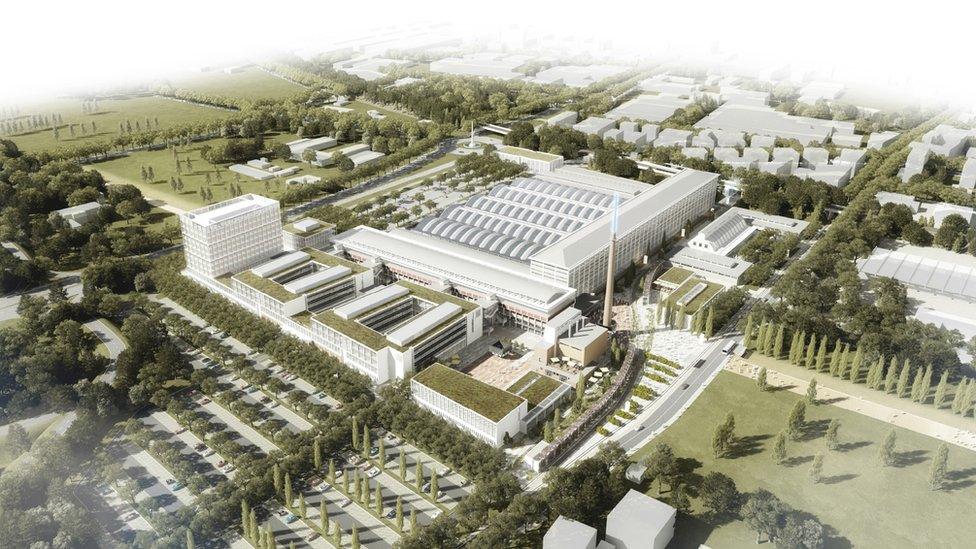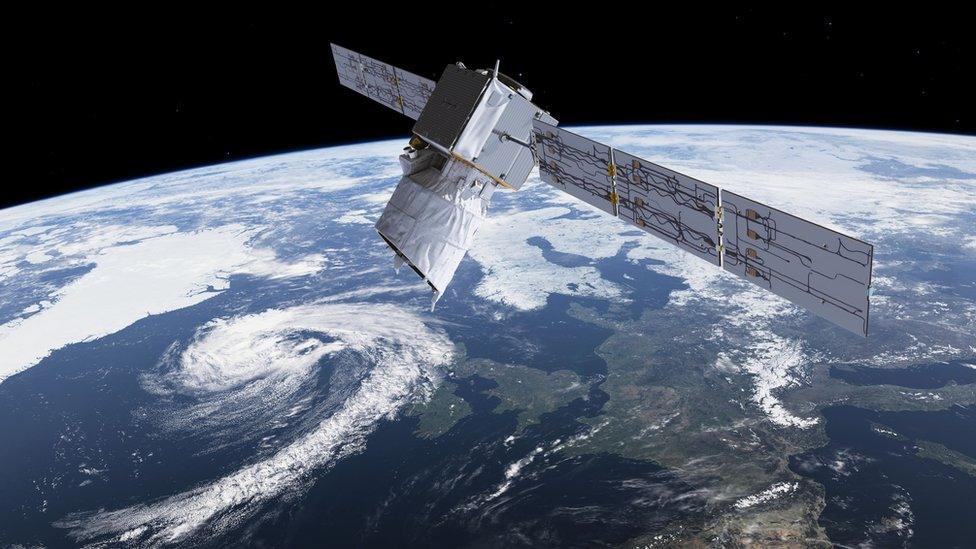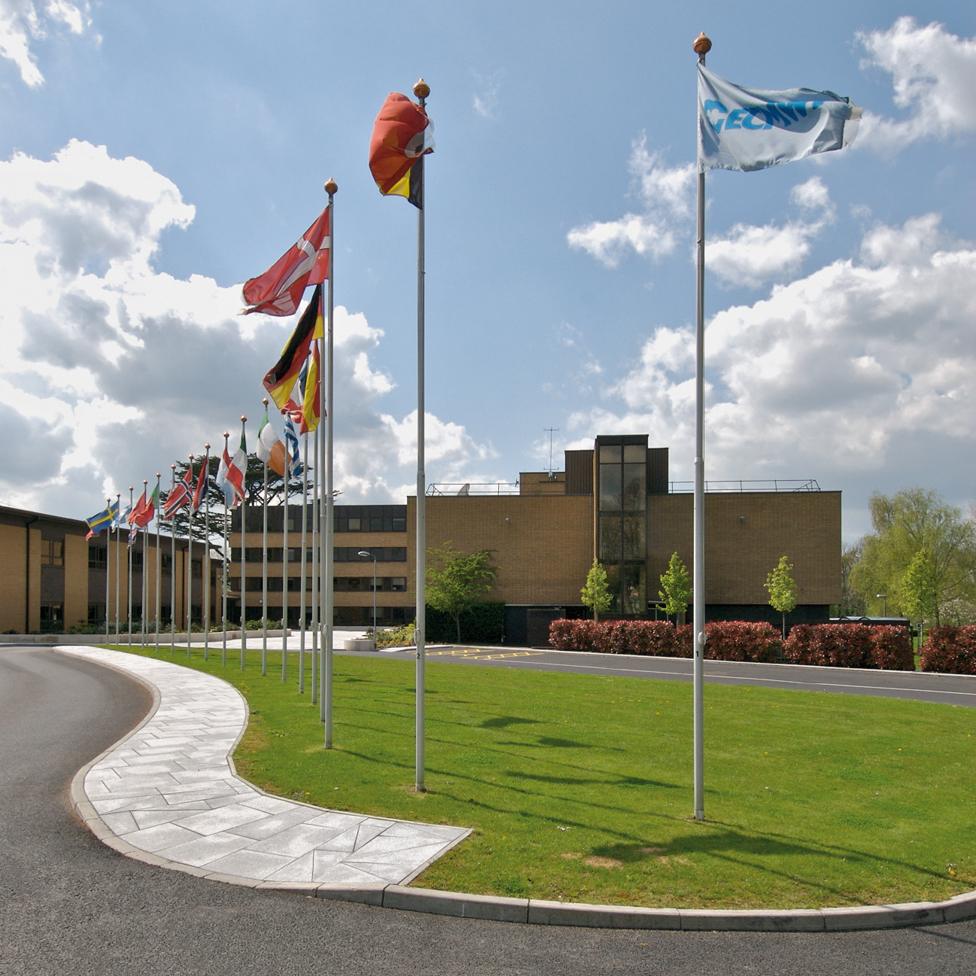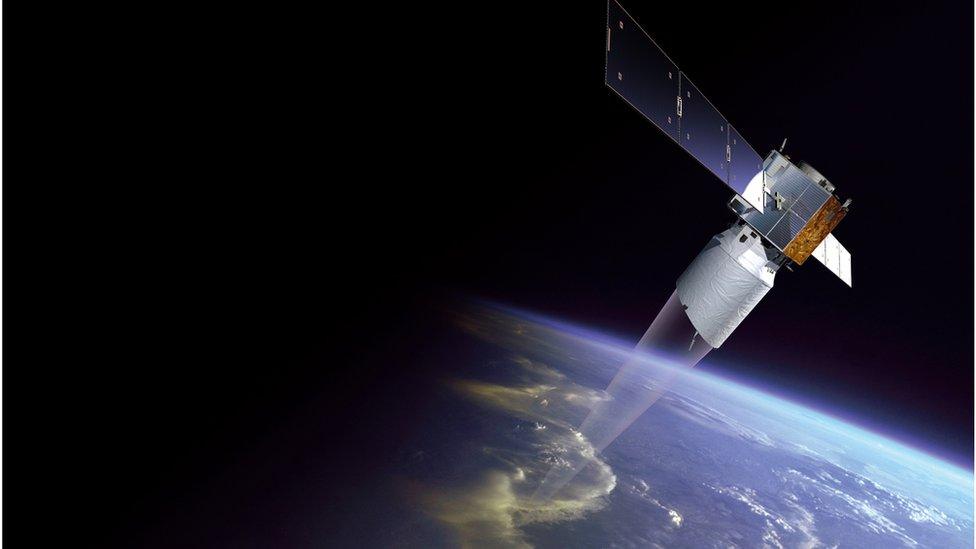Weather supercomputing ‘heads to Italy’
- Published

The Italian data and supercomputing centre would be built on the site of an old tobacco factory
The next-generation supercomputer that will drive Europe’s medium-range weather forecasts looks set to be housed in Bologna, Italy, from 2020.
It would succeed the current system based in Reading, UK.
Member states of the European Centre for Medium-range Weather Forecasts (ECMWF) made the indicative decision to relocate the facility on Wednesday.
Detailed negotiations will now be held with Italian authorities. The intention is to confirm the choice in June.
That is the date of the next full Council meeting of the ECMWF.
The bid from Italy's Emilia-Romagna Region to erect a new €50m (£43m) building on the site of an old tobacco factory was regarded as the leading contender, according to an evaluation panel.
A proposal from Finland is back-up should the legal, financial and technical discussions over the next few months suddenly fall over.
The ECMWF is an independent intergovernmental organisation supported by 22 full member states from Europe, with another 12 co-operating nations.

The ECMWF will be working closely with the European Space Agency on the Aeolus satellite
Its supercomputer system ingests weather observations to run models that construct forecasts out to 15 days ahead.
These forecasts are then shared with the member national meteorological agencies, such as Meteo France and the UK's Met Office.
The ECMWF's HQ has been sited at Shinfield Park on the outskirts of Reading since the organisation's set-up four decades ago.
Its first supercomputer, a CRAY-1A, was installed in 1978. The machines have been regularly updated, but the existing Reading buildings are not considered capable of meeting the technical requirements of the next device.
The dual CRAY-XC40 system currently running the numerical models will therefore be the last supercomputing to be done at Shinfield Park.
"It has been clear for a while now that the current data centre facility does not offer the required flexibility for future growth and changes in high-performance computing technology," ECMWF's Director-General Florence Rabier said in a statement.
"As laid out in our 2025 Strategy launched last September, we believe that continuing to improve weather predictions relies heavily on our ability to support our science with proportionate computing power. Intermediary goals to 2020 already require that the Centre’s next supercomputers should provide a tenfold increase in our computational capacity."

The ECMWF in Reading is engaged in research as well as operational forecasting
ECMWF staff do not need to be in the same location as the supercomputing facilities and there is no plan to move them as well.
The centre employs more than 300 people in Reading, many of them engaged in advanced meteorological research.
They will, for example, be working very closely with the European Space Agency later this year when it launches the British-built Aeolus satellite. This spacecraft is due to gather the first truly global, three-dimensional view of winds on Earth, providing a significant boost to the skill of medium-range forecasting.
A spokesperson for the centre said the movement of data storage and supercomputing out of the UK would have no impact on research activities in the UK. The ECMWF remained committed to Reading, she told the BBC.
Half of its €100m (£85m) budget comes through direct contributions from member states. The other half comes from the European Union, which contracts the ECMWF to perform climate change and atmospheric monitoring under its Copernicus environmental programme.
Brexit should have no impact on that arrangement, the spokesperson said, as the ECMWF already includes non-EU member states.
Jonathan.Amos-INTERNET@bbc.co.uk, external and follow me on Twitter: @BBCAmos, external
- Published18 January 2017
